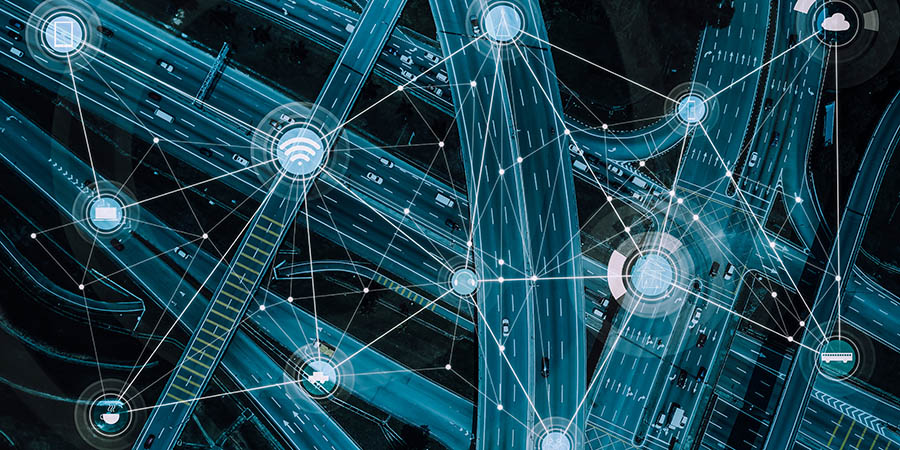Public transportation is a critical component for driving the modern economy machinery. Millions of people depend on these systems to commute to and from their workplaces every day. In 2023, the daily footfalls in the Dubai metro were pegged at 684,000. The number of commuters will increase as the population swells globally. Hence, a smooth and efficient operation of these systems must be maintained at all costs.
Governments across the globe invest heavily in public transportation infrastructure and buying vehicles, however, the revenue generation from these services is often low as a result of subsidized fares for the general public. Hence, cost reduction, minimizing downtime and optimizing efficiency are the constant pursuits for its operators. From roads and marine to aviation, the transport industry is pivotal for promoting the business and tourism of a country. Thus, technical snags such as signal loss, network disconnection and communication lag can greatly impact modern transportation systems.
Also from a sustainability standpoint, in the absence of these services, the public would be compelled to use their own means of transportation, which would essentially translate to an increase in carbon emissions. The global transportation sector produces more than seven billion metric tons of carbon dioxide (GtCO₂) a year. In 2022, cars and vans were the biggest source of transportation emissions, accounting for approximately 48% of global transportation emissions, according to a Statista report.
Harnessing Intelligent Transportation
Telecommunications and intelligent transportation systems (ITS) provide an ideal solution to the following challenges: high energy consumption, cumbersome operations, passenger safety and high operational costs of running public transportation. Telecommunication networks facilitate connectivity to vehicles, infrastructure and individuals, enabling real-time data sharing and decision-making. The integration of advanced communication technologies and ITS can bring transformative innovation to transit systems in terms of arrival and departure timings, schedule updates and route planning. Such progress can encourage public transport use, leading to reduced private vehicle use.
Furthermore, the advancement in mobile networks such as the transition from 4GLTE to 5G and 5G Advanced and 6G, is opening up the possibility of ubiquitous connectivity even on the move. In the UAE, operators such as du and e& are already testing gigabit speed in their commercial networks in collaboration with telcom vendors, including Huawei, Nokia and Ericsson among others.
By the early 2030s, experts estimate that data rates of up to 5 gigabits per second (gbps) will be the standard requirement for trains to provide passengers with high-speed and uninterrupted internet and telephone connections. To meet this requirement, new telecommunications masts need to be built close to the tracks along with different combinations of radio units and antennas for mobile and railway radio.
To that end, Ericsson is collaborating with its partners to test a 10-kilometer rail track for high-speed internet on trains. The Gigabit Innovation Track (GINT)— a 6.4-million-euro research project— is testing mobile communications with gigabit data rates along train tracks in a northern state in Germany, as well as innovative infrastructure for the further digitalization of rail operations within the Future Rail Mobile Communication System (FRMCS).
Opportunities Galore
Technological advancements are rapidly transforming transportation systems. Keeping pace with the developments, Dubai’s Road and Transport Authority (RTA) has collaborated with AWS to support the RTA's transition to cloud computing and knowledge in areas such as application programming, artificial intelligence, data solutions, augmented reality (AR), virtual reality (VR), and the Internet of Things (IoT).
Even the increasing adoption of electric vehicles must not be overlooked when addressing connectivity demands. The UAE’s Ministry of Energy and Infrastructure (MOEI) plans to construct fast charging stations (30 Fast chargers and 150 AC chargers) across the country. The EV charging network will be expanded across federal roads and destinations. Additionally, the latest intelligent vehicle technologies such as autonomous driving and in-car technology will increase the demand for connectivity to enable entertainment, navigation and safety features.
In the UAE, the latest addition to the transport sector is the Etihad Rail. The UAE National Rail Network will play a significant role in providing a modern and sustainable network for transporting freight and passengers, bolstering the leading regional position of the UAE. Once completed, the number of transported passengers is expected to reach more than 36.5 million annually by 2030. To ensure uninterrupted communication to these passengers on the move, telcos need to collaborate with the regulatory authorities to establish an efficient railway radiocommunication system to facilitate the use of upgraded communication devices on the trains (as well as mobile devices) to ensure the quality of telecom services to people onboard and other communication services on railway tracks is upheld.
Furthermore, the UAE’s maritime sector is increasingly gaining global prominence. In 2022, the sector added AED 129 billion to UAE’s GDP— an 18% jump from 2021. To support the sector, fully managed maritime service ICT solutions are critical for meeting the connectivity demands of the vessels at sea along with the crew members. Satellite communication has become the go-to solution for maritime connectivity. Telcos can leverage SATCOM technology alongside traditional radio networks to enable digitization in the maritime sector. The implementation of smart sensors, IoT devices, data analytics, and artificial intelligence will empower stakeholders to make informed decisions and streamline maritime operations. Other connectivity services such as managed security, managed internet, Wi-Fi, TV, IoT and other applications for the crew will see increased demand in the future.
In the aviation space, in-flight connectivity, aerial public transport and the use of drones in industrial settings are rapidly making advancements and widening the scope of increased connectivity. The telecommunication sector stands to profit greatly from the connectivity demands emanating from the transportation sector. From real-time traffic monitoring, smart parking management, and connected vehicle technologies to efficient public transportation systems in land, air and sea, leveraging telecommunications in intelligent transportation systems is essential for efficient and sustainable transport networks. Telcos and their industry partners must work towards the integration of seamless and secure connectivity to pave the way for a smarter and more connected world.










